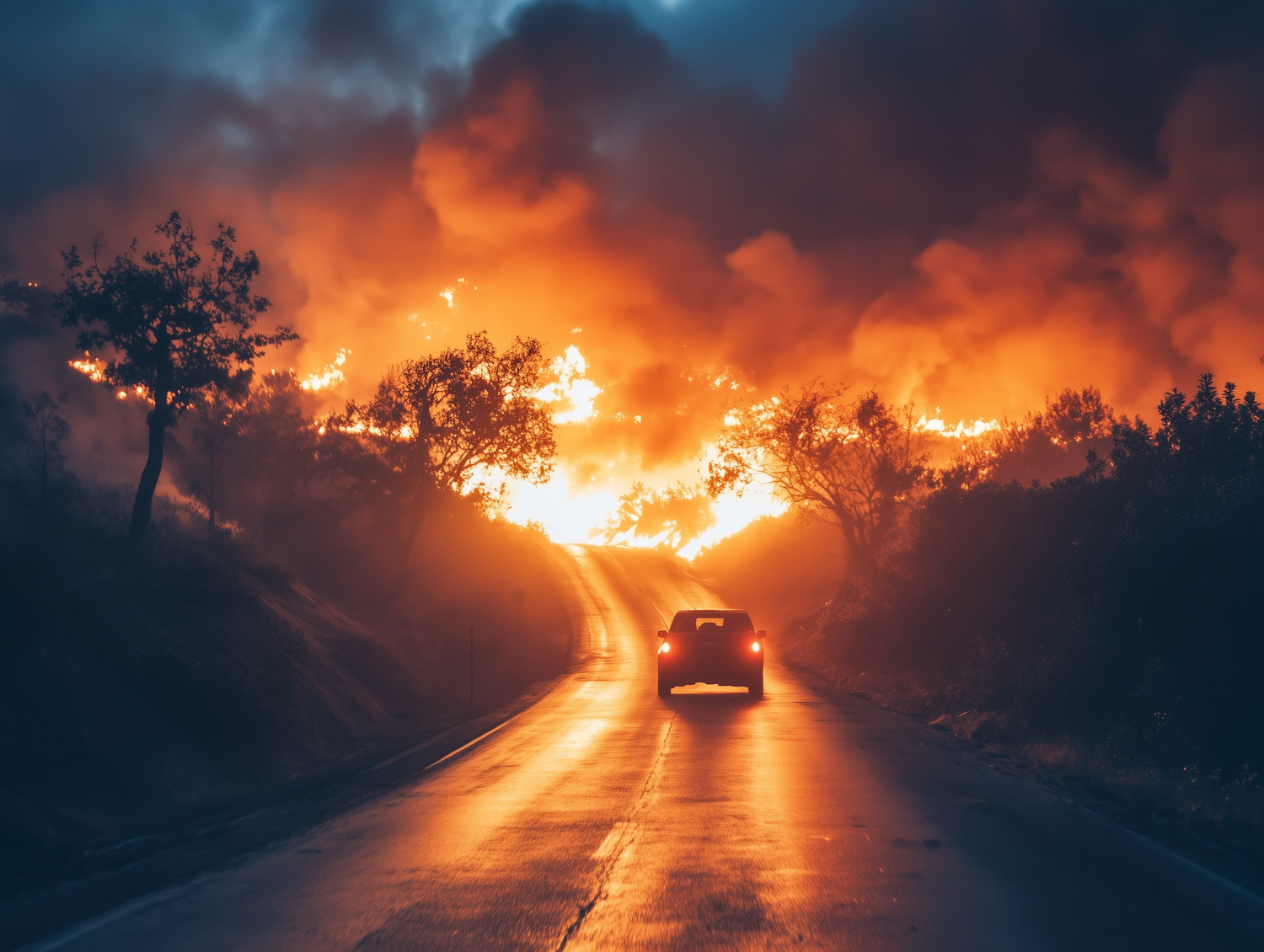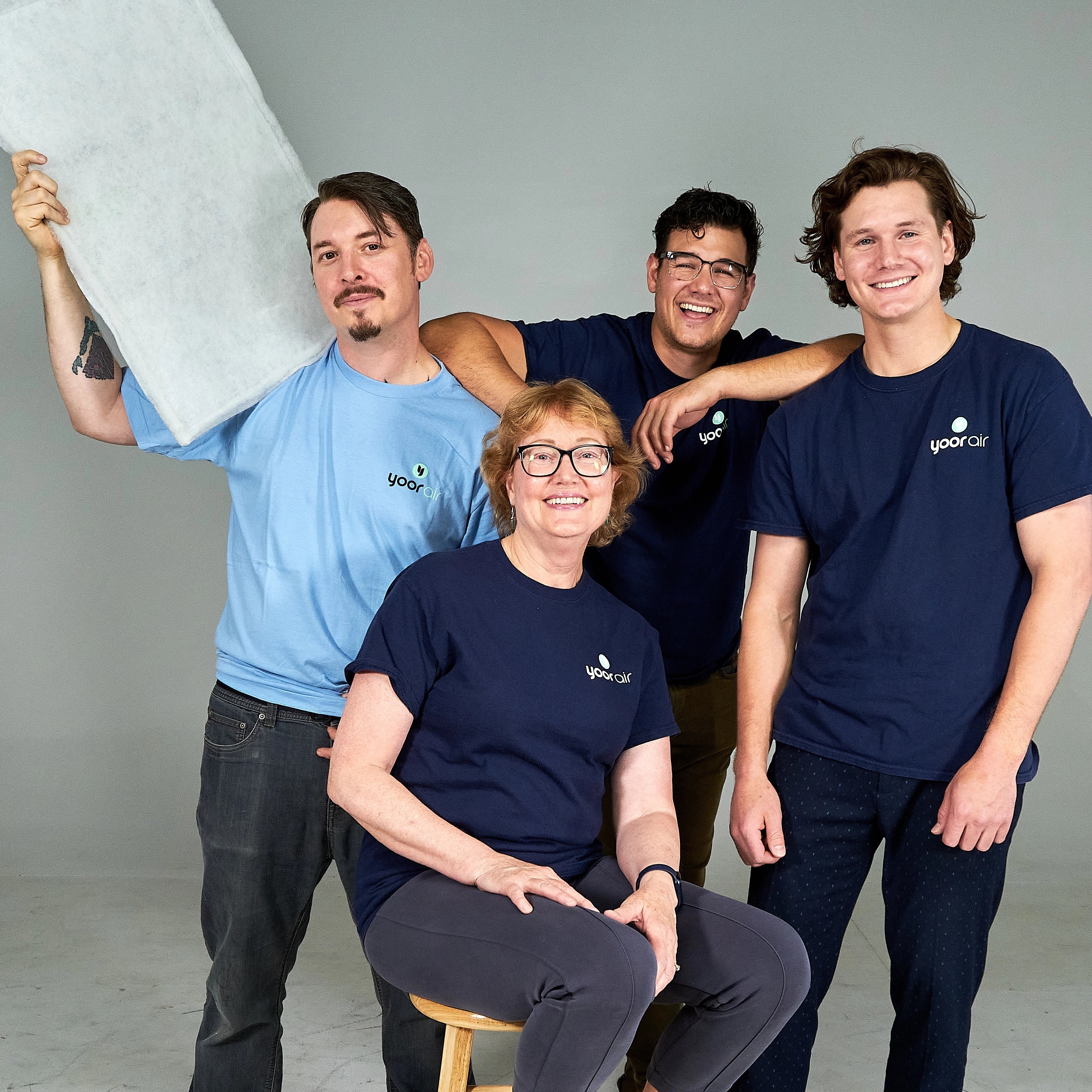Living in Southern California comes with perks: sunny days, gorgeous beaches, and endless hiking trails. But when fire season rolls around, the state's natural beauty takes a backseat to smoky skies and hazardous air quality.
Wildfire season is actually no longer a brief event; it's an annual ordeal that can stretch from late spring to early winter, fueled by dry winds, arid landscapes, and rising global temperatures.
The lingering smoke from these wildfires isn't just a nuisance; it's a health hazard. Particulate matter, particularly PM2.5 (fine particles), can travel hundreds of miles, infiltrating homes and putting your lungs at risk. Southern Californians, even those far from the flames, often find themselves coughing, wheezing, and Googling "the best air filter to combat wildfires".
Spoiler Alert: the best air filter for wildfire smoke is a carbon filter. Let's explore why this option should be your first line of defense when smoke clouds roll in.
What Are Carbon Filters and Why Do They Matter?
A carbon filter isn't your average air purifier filter. It's made of activated carbon, a material processed to create tiny, porous surfaces that capture and neutralize airborne contaminants.
While HEPA filters excel at trapping particles, carbon filters bring an added bonus: the ability to absorb odors, smoke and gases.
A carbon filter is a specialized type of air filter designed to tackle pollutants that go beyond the capabilities of standard filters. At its core, a carbon filter is made from activated carbon, also known as activated charcoal.
Try The Clean Freak - Activated Carbon Air Filter | Starting from $45
This material undergoes a special treatment process to create a vast network of tiny, porous surfaces. These pores dramatically increase the surface area of the carbon, making it incredibly efficient at trapping and neutralizing airborne contaminants.
The magic of carbon filters lies in a process called adsorption (not to be confused with absorption). When air passes through the filter, gases, odors, and volatile organic compounds (VOCs) adhere to the porous surfaces of the activated carbon.
Unlike HEPA filters, which physically trap particles like dust and pollen, carbon filters chemically bond with these microscopic pollutants, effectively neutralizing them.
What is Activated Carbon?
Activated carbon is often derived from natural materials such as coconut shells, wood, or coal. These materials are heated to extremely high temperatures in a controlled environment, which removes impurities and activates the carbon.
This activation process creates millions of tiny pores, significantly increasing the carbon's ability to capture pollutants.
Carbon Filters Value for Wildfire Smoke
Wildfire smoke isn't just particulate matter; it's a cocktail of harmful chemicals, including benzene, formaldehyde, and acrolein. Carbon filters are uniquely suited to capture these volatile organic compounds (VOCs), giving them an edge over other filter types.
Carbon filters are especially valuable for filtering substances that other filters struggle with:
- Volatile Organic Compounds (VOCs): Found in smoke, paints, cleaning supplies, and more.
- Odors: Whether it's smoke from a wildfire or lingering cooking smells, carbon filters excel at neutralizing strong odors.
- Chemicals: Harmful gases like benzene, formaldehyde, and acrolein, often present in wildfire smoke, are effectively captured by carbon filters.
By combining their chemical filtration capabilities with physical trapping (when paired with HEPA filters), carbon filters offer a comprehensive solution for improving indoor air quality.
Their ability to target both gases and particulates makes them indispensable during wildfire season, especially in areas like California where air pollution from smoke is a recurring concern.
Differences Between Filter Types: A Quick Breakdown
| Filter Type | Pros | Cons |
|---|---|---|
| HEPA Filters | Captures PM2.5, pollen, and dust | Can't trap VOCs or odors |
| Carbon Filters | Captures VOCs, odors, and some particulates | Needs frequent replacement during fire season |
| Electrostatic | Low maintenance, reusable | Limited effectiveness on smoke particles |
| UV Filters | Kills bacteria and viruses | Ineffective against particulates and VOCs |
While each has its strengths, carbon filters stand out during wildfire season. Their ability to trap harmful gases and neutralize odors makes them indispensable when the air smells more like a campfire than coastal breezes.
Why Southern California Needs Carbon Filters
Smoke Travels Farther Than You Think
Even if the flames are hundreds of miles away, smoke doesn’t respect boundaries. Southern California's infamous Santa Ana winds can carry wildfire smoke across counties, blanketing urban areas with hazardous air.
Carbon filters can tackle the wide-reaching impact of these particles and gases, ensuring your indoor air stays breathable.
Prolonged Fire Seasons Are the New Normal
Wildfire seasons are getting longer. The combination of drought conditions and increased temperatures has turned California into a tinderbox. This means you'll need a filter that can handle months of compromised air quality—carbon filters, like The Clean Freak from Yoor Air are up to the task.
Indoor Air Quality Matters More Than Ever
When the air outside is thick with smoke, staying indoors feels like the safest option. But indoor air isn't immune to pollution. Wildfire smoke can seep through cracks in windows and doors, and without proper filtration, you're essentially trapping the bad air inside.
Benefits of Switching to Carbon Filters
1. Effective Against Wildfire Smoke
Carbon filters excel at removing the VOCs and odors associated with wildfire smoke. They also complement HEPA filters in dual-filter systems, providing comprehensive air purification.
2. Odor Elimination
Let's face it: the smell of wildfire smoke is more than unpleasant. Carbon filters neutralize these odors, leaving your home feeling (and smelling) fresh.
3. Chemical Capture
Activated carbon absorbs harmful chemicals that are often overlooked by other filter types, reducing the long-term health risks associated with smoke inhalation.
Challenges of Carbon Filters and How to Overcome Them
No filter is perfect, and carbon filters come with a few quirks to consider. One challenge is their shorter lifespan during wildfire season, as they can become saturated quickly when smoke levels are high.
To address this, it's a good idea to stock up on replacement filters before fire season begins. Another factor is cost; high-quality carbon filters tend to be more expensive than HEPA-only options. However, their ability to effectively combat wildfire smoke and harmful chemicals makes them a worthwhile investment for ensuring cleaner, healthier air in your home.
Signs It May Be Time to Replace Your Filter
It may be time to replace your carbon filter if you notice certain signs indicating it is no longer functioning effectively. Persistent smoke odors in your home are a major red flag.
Lingering Smells
Carbon filters are designed to neutralize odors from wildfire smoke and other pollutants, so lingering smells from your Friday night fish fry often mean the filter is saturated and no longer able to absorb harmful gases.
Increase in Asthmatic Symptoms
Another indicator is an increase in allergy or asthma symptoms among household members. If you or others in your home begin experiencing more frequent coughing, sneezing, throat irritation, or difficulty breathing, it's possible that the filter is no longer capturing allergens.
This can happen when the filter becomes overloaded with pollutants, reducing its capacity to improve indoor air quality.
Visual Inspection
A visual inspection of the filter itself can also be valuable. Over time, carbon filters become visibly dirty or discolored as they trap pollutants.
If the filter appears dark, clogged, or unevenly discolored, it's a clear sign that it has reached the end of its life. Continuing to use a filter in this state can reduce your air purifier's effectiveness and allow pollutants to circulate.
Finally, pay attention to airflow. A properly functioning filter allows air to pass through the purifier freely. If you notice weak or inconsistent airflow, it's likely that the filter is clogged with debris, reducing the purifier's ability to process air efficiently.
This not only affects air quality but can also put unnecessary strain on your purifier, potentially shortening its lifespan.
How to Prepare for Wildfire Season
Invest in an Air Purifier with Carbon Filtration
Look for air purifiers that combine HEPA and carbon filters for optimal performance. Brands like Yoor Air offer excellent options tailored for wildfire season. Their filters are designed to tackle both particulates and harmful gases, making them ideal for Southern California homes.
Seal Your Home
Wildfire smoke can sneak in through even the smallest gaps. Weatherstrip doors and windows to minimize infiltration. Check occasionally for cracks or wear and tear, and perform regular maintenance.
Monitor Air Quality
Stay informed with apps like AirNow or PurpleAir. When air quality drops to "unhealthy" levels, keep windows closed and run your air purifier consistently.
Stock Up on Supplies
Don't wait for smoke to fill the sky. Keep extra carbon filters, masks, and other essentials on hand so you're prepared when wildfire season hits. These supplies should be checked and replenished as needed.
Don't Let Smoke Take Your Breath Away
Fire season in California isn't just a yearly nuisance—it's a reality that demands preparation. Investing in the right air filtration system, especially one with carbon filters, can transform your home into a sanctuary of clean air amidst smoky chaos.
Your lungs ... and nose... and eyes, will thank you.




